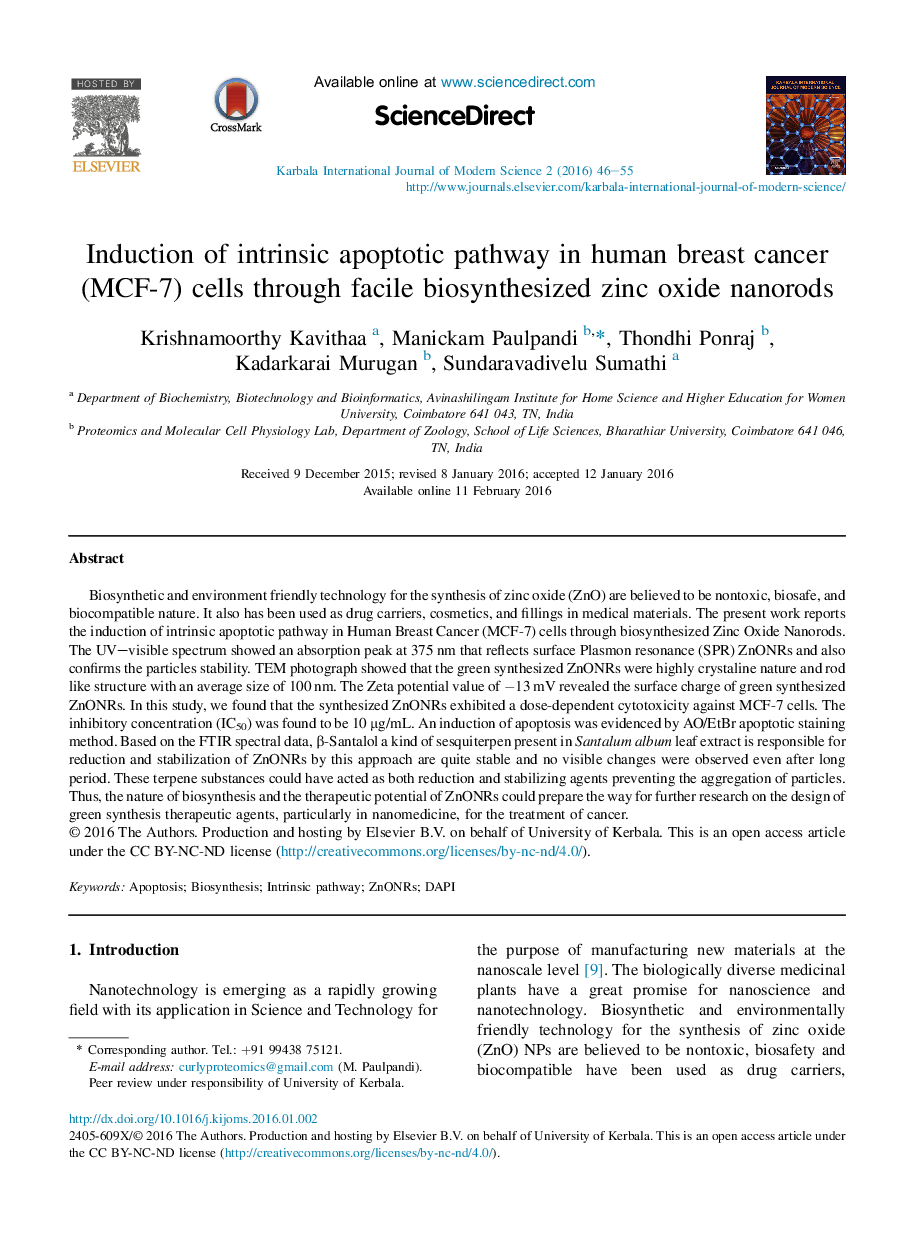| کد مقاله | کد نشریه | سال انتشار | مقاله انگلیسی | نسخه تمام متن |
|---|---|---|---|---|
| 483746 | 1446473 | 2016 | 10 صفحه PDF | دانلود رایگان |

Biosynthetic and environment friendly technology for the synthesis of zinc oxide (ZnO) are believed to be nontoxic, biosafe, and biocompatible nature. It also has been used as drug carriers, cosmetics, and fillings in medical materials. The present work reports the induction of intrinsic apoptotic pathway in Human Breast Cancer (MCF-7) cells through biosynthesized Zinc Oxide Nanorods. The UV–visible spectrum showed an absorption peak at 375 nm that reflects surface Plasmon resonance (SPR) ZnONRs and also confirms the particles stability. TEM photograph showed that the green synthesized ZnONRs were highly crystaline nature and rod like structure with an average size of 100 nm. The Zeta potential value of −13 mV revealed the surface charge of green synthesized ZnONRs. In this study, we found that the synthesized ZnONRs exhibited a dose-dependent cytotoxicity against MCF-7 cells. The inhibitory concentration (IC50) was found to be 10 μg/mL. An induction of apoptosis was evidenced by AO/EtBr apoptotic staining method. Based on the FTIR spectral data, β-Santalol a kind of sesquiterpen present in Santalum album leaf extract is responsible for reduction and stabilization of ZnONRs by this approach are quite stable and no visible changes were observed even after long period. These terpene substances could have acted as both reduction and stabilizing agents preventing the aggregation of particles. Thus, the nature of biosynthesis and the therapeutic potential of ZnONRs could prepare the way for further research on the design of green synthesis therapeutic agents, particularly in nanomedicine, for the treatment of cancer.
Journal: Karbala International Journal of Modern Science - Volume 2, Issue 1, March 2016, Pages 46–55